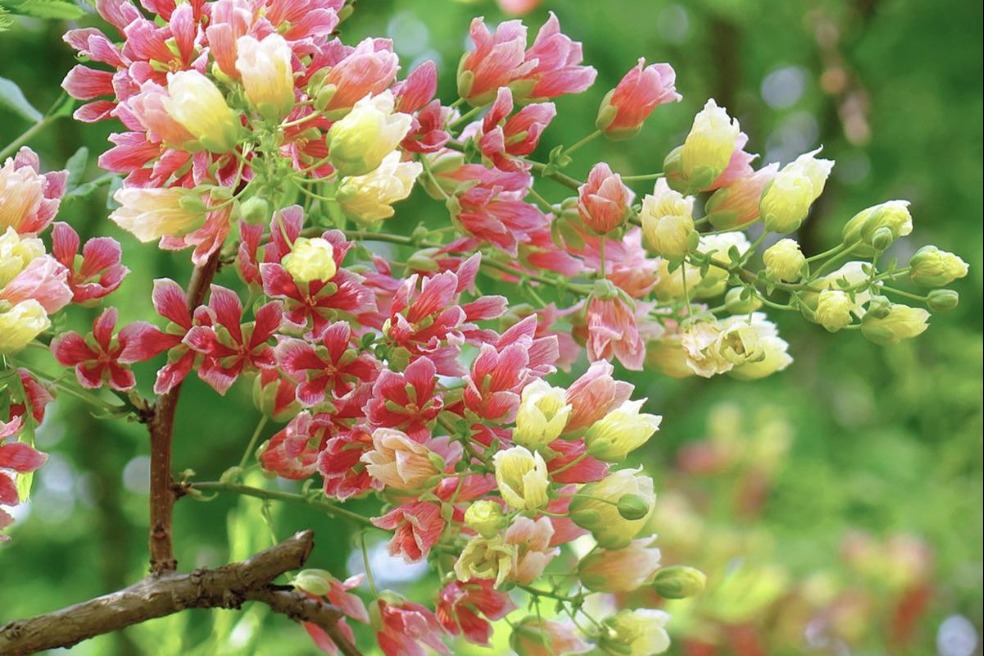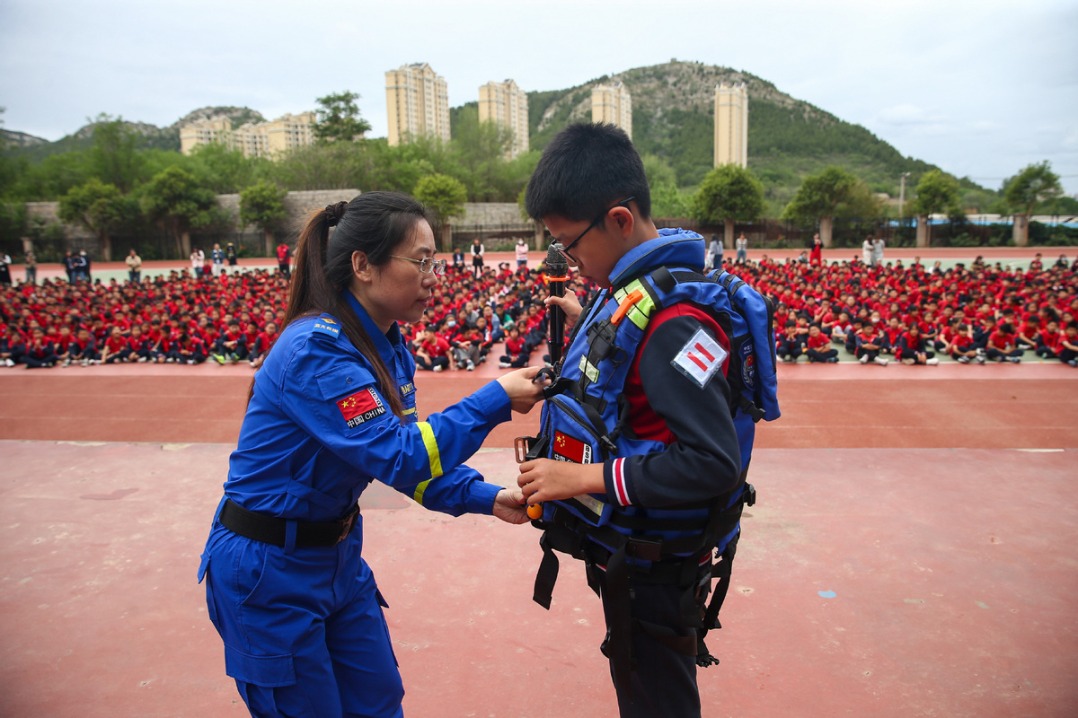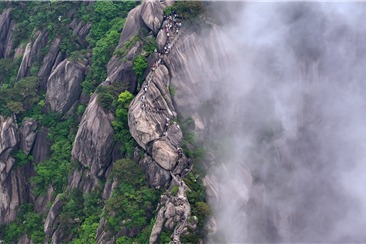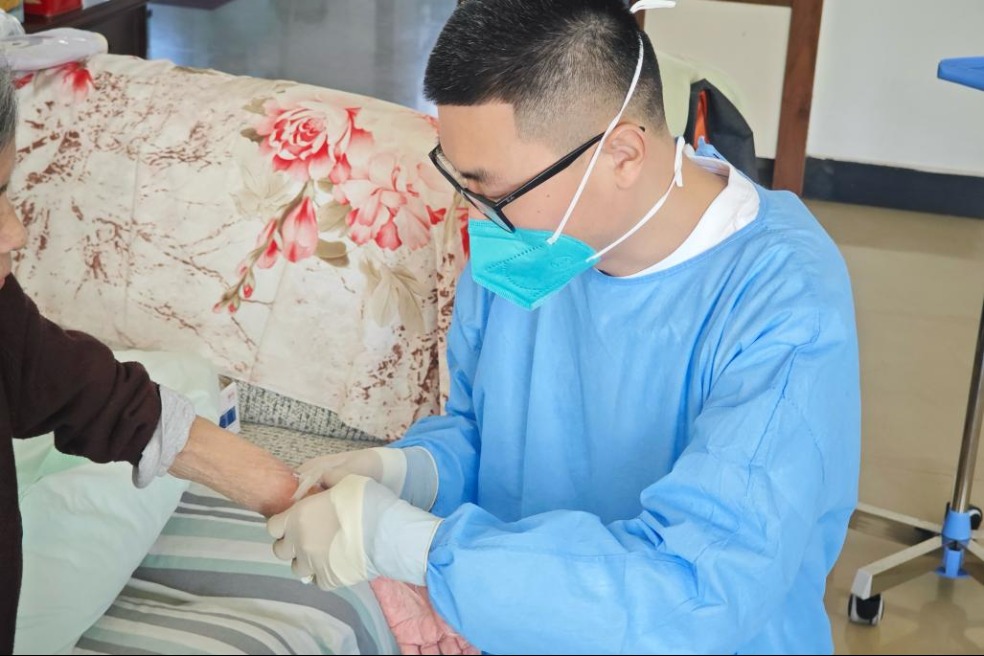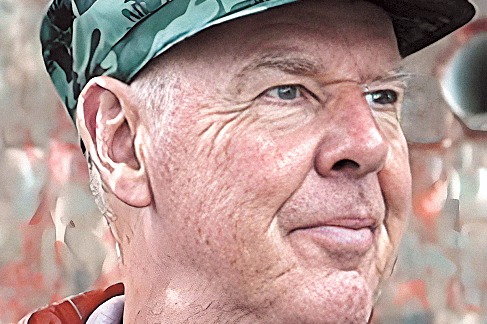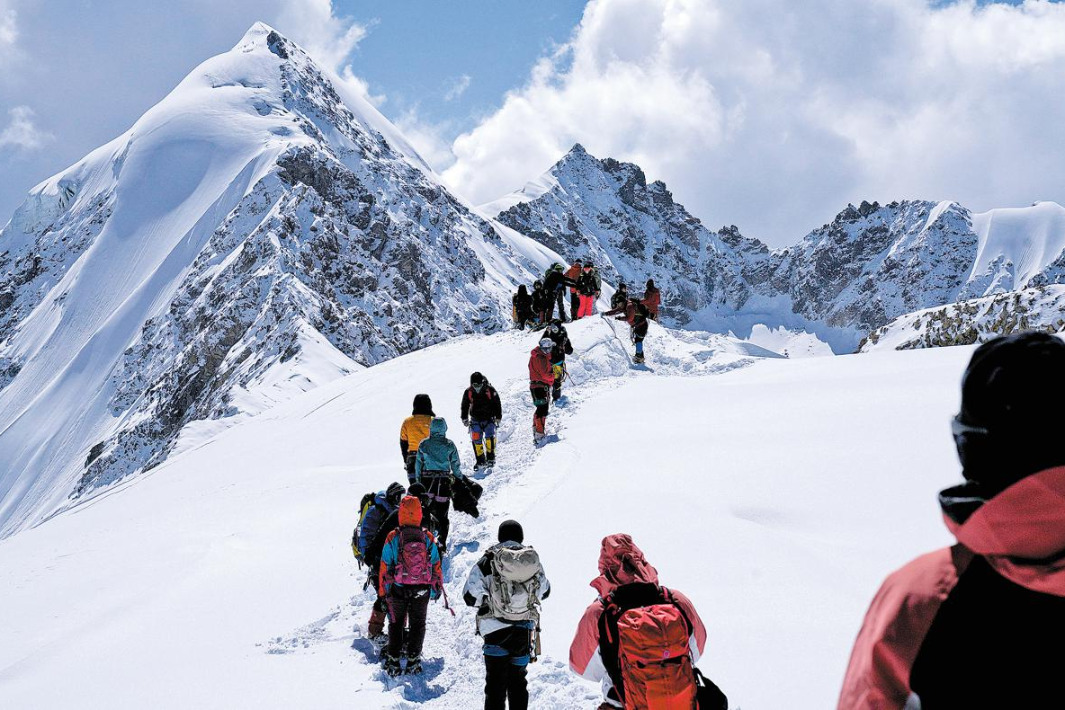Snow leopard cub steadily recovering after great fall

From a dying cub stranded on the rocks to an energetic one frolicking with footballs and enjoying massages from veterinarians, Lingxiaozhe, the snow leopard, is steadily recovering after two months of intensive care in Xining, Qinghai province.
Now under first-class State protection, Lingxiaozhe was found on March 4 — just one day before China's traditional solar term jingzhe, or the "Awakening of Insects". During a routine patrol in the Yushu Tibetan autonomous prefecture, workers at Three-River-Source National Park spotted the emaciated cub, which showed only a faint sign of life through its slowly blinking eyes.
Following a remote diagnosis by an expert team, the cub was transported more than 10 hours overnight to a rescue and breeding center in Xining for urgent treatment.
"When Lingxiaozhe was first brought in, it was incredibly thin and in very poor condition, unable to move its head and limbs," said Qi Xinzhang, deputy director of the center, on his Weibo account. He added that the cub, weighing 9.7 kilograms and measuring 74 centimeters, was far below normal size.
A preliminary assessment suggested the 6-month-old male may have fallen from a great height in mid-February. Prolonged hunger and immobility had led to severe dehydration, liver dysfunction and diarrhea, while its body temperature had dropped steadily — a sign of imminent death, Qi said.
Working with the College of Veterinary Medicine at China Agricultural University, the center developed a customized treatment plan that included providing warmth, oxygen and nutritional support, correcting dehydration and electrolyte imbalance, and administering antibacterial and anti-inflammatory therapies.
Under the care of the medical team, Lingxiaozhe has progressed from struggling to lift its head and crawling, to now walking and jumping on its own. A magnetic resonance imaging scan late last month showed some lingering compression and inflammation in its spinal cord, but surgery may not be necessary, Qi said.
However, unlike some rescued snow leopards that can be reintroduced to the wild, Lingxiaozhe is more suited for captivity due to its lack of survival skills. Rescued at a young age, the cub has not learned to hunt and has an altered understanding of the relationship between humans and snow leopards, Qi noted. Even so, the rescue effort was "very valuable and meaningful", he said.
"In captivity, Lingxiaozhe can contribute to artificial breeding, passing on its genes to support conservation work," he said. "And the rescue process itself has raised public awareness and inspired more people to care about and engage in snow leopard protection."
A major snow leopard survey released in January found that China is home to about 60 percent of the world's snow leopard habitats. Qinghai's Three-River-Source area, in particular, is one of the most densely populated regions, with about 1,002 snow leopards living within its 360,000-square-kilometer expanse.
- Snow leopard cub steadily recovering after great fall
- Assisted fertility coverage facilitates path to parenthood
- Chinese modernization key to Taiwan's prosperity: cross-Strait scholars
- Experts blast US' unilateral deep-sea mining order
- New guideline to help public better prepare for earthquakes
- Square-faced monkey at Hefei wildlife park goes viral

















